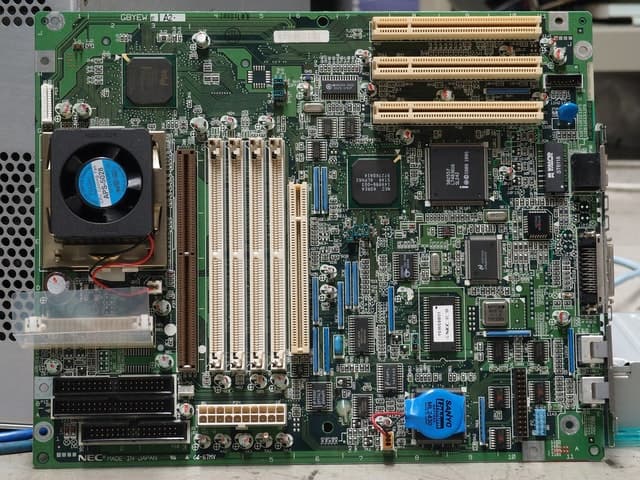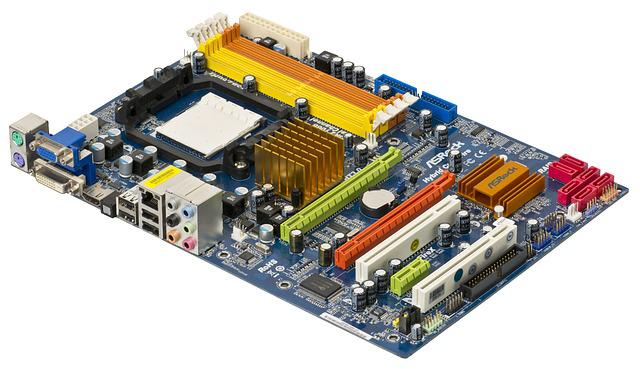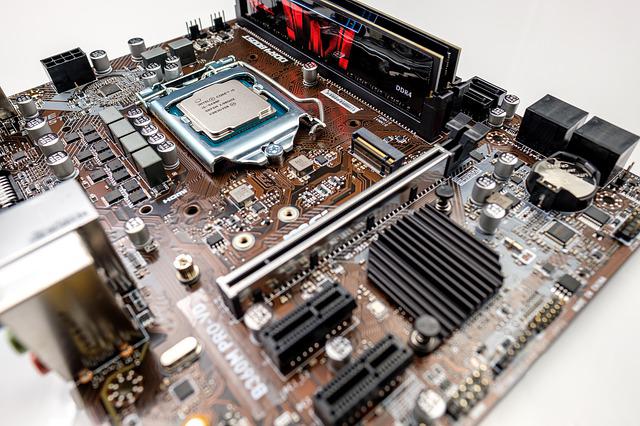In this article, we’ll cover everything you need to know about motherboards basics. We’ll start by explaining what they are, then move on to their components and finally look at some of the more advanced features.
What’s a motherboard?
The motherboard is the main component of a PC. It holds all the chips, connectors, power supply, cooling system, memory slots, video card, sound card, floppy drive, CD-ROM drive, hard drive(s), DVD drive, keyboard, mouse, monitor, and other electronic devices needed for running a PC.

How does it work and why does it matter?
Most computers contain at least two main components. One is the CPU (Central Processing Unit) or processor, which performs basic arithmetic calculations such as addition, subtraction, multiplication, and division. The other is memory, which stores data and programs. The motherboard provides a connection between these two components.
A motherboard is essential to every computer because it connects the CPU to the rest of the system. It also contains connectors that connect the various parts of the system. This allows those parts to communicate with each other.
Why do we need a separate PCB or Motherboard?
First things first, PCB stands for printed circuit board. The motherboard in your computer is your main printed circuit board.
You get into trouble if you mix up the signals on one side of the motherboard with those on the other. For example, say a printer sends out an 8-bit signal, but an IDE controller is expecting 10-bit signals. If the motherboard did not have enough pins to accommodate both sets of signals, then one set would be lost.
Is there any way to make my own motherboard?
If you mean “can I make my own motherboard”, yes, absolutely. But it’ll take some time and patience.
There are several ways to build your own motherboard. The simplest method is to use a soldering iron and solder wires directly onto the surface of the motherboard. This works well for small boards, because you can see what’s going on, and it’s easy to remove individual components without damaging anything.
This is called “handsoldering” and is often done by hobbyists who want to learn electronics. However, handsoldered circuits tend to be unreliable, so they’re usually only used for prototyping. This is also why I would always recommend to buy a reliable premade motherboard. You can find interesting motherboards here.
Motherboard basics 101: inside or outside the pc?
A motherboard is ofcourse located inside the computer case and this is where most of the components and computer peripherals connect together. With tower computers, their motherboards are located on the left or right sides of the towers and they’re the largest circuit boards. External motherboards don’t exist. Look at it as driving a car with it’s engine outside of the car itself. That would feel weird and it wouldn’t make any sense.
Size & Specs
It depends on the type of computer you are building. Generally speaking, smaller computers (like netbooks) will require less space than large desktop systems. Large desktops may require a larger motherboard due to the number of additional peripheral cards required.
Always check the specs before buying a motherboard. You should know exactly what socket is being used, whether it has DIMM slot, whether it supports SLI/Crossfire, etc.
Motherboard Types
When talking about motherboards basics, we need to discuss the types that exist out there. There are three types of motherboards: ATX, MicroATX, MiniITX. All three come with different sizes, form factors, and features.
ATX – Most common motherboard used today. Has two x16 PCI Express slots, six DDR3 memory slots, four USB 2.0 ports, audio jacks, PS2 port, VGA port, HDMI output, SATA 3Gbps connector, and onboard graphics.
MicroATX – Smaller version of the ATX standard. Typically has only two PCI Express slots, four DDR3 memory slots, no USB ports, no audio jack, and no onboard graphics. Also known as ATX12V v1.3.
Mini-ITX – A smaller version of the ATX motherboard. Typically has only one PCI Express slot, two DDR3 memory slots, and no USB ports. Also known as ATx12V-2.4. Usually used in laptop computers.
Motherboards come in many shapes and sizes. Some are square while others are rectangular. All of them have similar features, such as PCI slots, SATA ports, USB ports, etc.
How many RAM slots does my motherboard support?
RAM slots refers to how many DDR3 SDRAM modules are installed in your motherboard. There are 4 DDR3 SDRAM slots in each memory module. Each memory module supports either 1, 2, or 4 sticks of DDR3 SDRAM.
What size should I choose?
The size of your PC is determined by the amount of memory you put in it. To figure out how much memory you need, divide the total amount of RAM that you plan to install by the maximum capacity of each memory stick. For example, if you have 12 GB of RAM, then you’ll need 6 memory sticks. If you choose 16 GB of RAM, then 8 memory sticks will do.
Sockets
Socket type refers to the location of the central processing unit in the motherboard.  Socket 775 was introduced in 1999 (first generation Pentium III). Since then, every new processor has been designed for compatibility with the previous model. So when you buy a “new” processor, chances are that it won’t fit in a socket 775 board. On the other hand, older processors like Athlon XP, Celeron, Pentium 4, and Core 2 Duo all have compatible sockets which means that you can easily upgrade your system using a newer processor.
Socket 775 was introduced in 1999 (first generation Pentium III). Since then, every new processor has been designed for compatibility with the previous model. So when you buy a “new” processor, chances are that it won’t fit in a socket 775 board. On the other hand, older processors like Athlon XP, Celeron, Pentium 4, and Core 2 Duo all have compatible sockets which means that you can easily upgrade your system using a newer processor.
Socket AM3 is the latest standard for high performance CPUs. It is backwards compatible with Socket 939 Intel platforms. AMD’s APU platform uses this standard.
Graphics card
If you’re planning on playing games, you’ll want to ensure that your video card is compatible with your motherboard. The video cards usually include an adapter card or bracket that allows the card to be inserted into the back of the case. Once the card is in place, it plugs directly into the motherboard via the PCIe slot. You really just want to make sure your motherboard supports the graphic card and CPU you actually wan’t to be using.
PCIe Slot
A PCIe slot is also referred to as a high-speed serial advanced technology attachment (HSS ATI), peripheral component interconnect express (PCI Express) interface, or simply a slot. This fast interface connects peripherals to a computer.
There are three types: Type 0, Type 1, and Type 3. Type 0 slots are for low-end devices; they connect only to a single device at a time. They are typically found on motherboards manufactured between 2000 and 2008. Type 1 slots are for midrange products; they allow up to four devices to be connected simultaneously. They are more common than Type 0 slots today. Type 2 slots are for high-end devices; these allow eight devices to be connected simultaneously, making them ideal for servers.
Average price
The average price for a barebone motherboard is about $80-100 depending on brand. If you’re looking for something simple, inexpensive, and easy to use, a $100 motherboard will likely work fine for you. But if you need high performance and stability, you’ll probably need to spend more, around $150-200.
Barebones include everything except RAM and hard drive. The main advantage of buying a barebone is that you get to choose the exact configuration you need. For example, if you plan to use an SSD instead of a HDD, you’ll have to add one yourself. If you need more memory, you’ll have to buy it separately. In my opinion, barebones are great because you can save money and avoid unnecessary parts.
Starting from scratch
If you are planning to build a custom PC, you can spend up to hundreds of dollars on components. A good rule of thumb is to always spend at least 20% less than you would on an equivalent retail component. This way you can make sure that you don’t end up spending too much money or buying something that doesn’t meet your needs.
Low budget build
If you’re looking for a basic motherboard for a low budget build, I’d recommend you look into a mini ITX motherboard. They’re small enough to be able to fit under desks where they wouldn’t be noticed. However, most of these boards are aimed towards gaming so you’ll probably want to look into a mid range board or even higher end for a serious build.
Go cheap?
Also, you’ll usually find people recommending you go with the cheapest possible option. That usually turns out to be the worst choice. You should try to find the best value for your money.
Performance
A big problem with choosing a motherboard based on its pricing is that you may not be getting what you were aiming for. For example, some very expensive motherboards will offer better overclocking capabilities, but their performance will be lower than cheaper ones.
I suggest choosing a motherboard based on how well it fits your needs rather than by its price tag.
Most computer builders agree: All other things being equal, motherboards have only a minimal effect on performance. However, upgrading a computer’s motherboard to support a faster processor, more memory, or a faster video card or disk interface can greatly improve performance if you replace one or more components at the same time.
Overclocking
Motherboards also vary in terms of whether or not they allow overclockers to increase their CPU speed beyond stock speeds. Some motherboards do not provide this feature while others do.
It’s important to note that there are two types of overclockers: those who overclock CPUs (and sometimes GPUs) and those who overclock memory. While both groups of overclockers can benefit from using a motherboard that allows them to overclock, each group has different requirements.
CPU Overclockers
CPUs can run at frequencies above their maximum rated frequency. When this happens, the CPU is overclocked. Therefore, when building a new system, you should consider which motherboard supports overclocking before making a purchase decision.
A question I often get is, should you overclock your CPU or not? For some people this might be interesting, but for sure not for everybody.
Memory Overclockers
Memory modules typically run at frequencies below their maximum rated frequency. In order to get the full benefits of a high-speed memory module, motherboard manufacturers must allow memory overclockers to set the clock rate of the memory modules.
For example, DDR3 memory modules operate at a fixed frequency of 1 GHz. However, DDR4 memory modules operate at a variable frequency between 800 MHz and 2133 MHz. Therefore, DDR4 memory modules cannot be used on motherboards without an appropriate BIOS update.
The motherboard manufacturer’s website should contain information about the motherboard’s features and specifications as well as any known limitations that affect overclocking. The following websites contain useful information:
Intel Motherboard Specifications
AMD Motherboard Specifications
Choosing the right Motherboard for your needs
When building my own PC, I tend to do things like this:
1) Get a bunch of different types of RAM (and stick with the same size/type)
2) Pick the highest speed RAM available to me
3) Buy the fastest CPU I can afford
4) Find a motherboard that supports the CPU
Look through reviews online to see if anyone else has had issues with it. I have already reviewed a ton of motherboards and you can find all of these reviews on this website.
Changing your motherboard
Usually, the main reason why you would want to change the motherboard is because you bought a bad motherboard. The motherboard itself is not going to make or break your computer.
If you’re buying an existing system or already have a running PC, you can always decide to upgrade the motherboard because it’s easy to swap out the old one and to install a new one.
Conclusion
In general, a motherboard is just a piece of hardware that connects your system components together, allowing them to communicate over various buses such as PCI Express and SATA. It does nothing special in terms of performance, and it cannot affect the performance of your system unless there are problems with its design. Therefore, you should never base your decision on the cost of a motherboard; you should base your decision on the features you require.
However, there are certain circumstances when you might consider using a motherboard with a particular feature. If you’re building a new machine, then you might prefer to start with a pre-built system, which means that you could simply buy a motherboard without needing to worry about installing it.
Feel free to drop your questions below or let me know what you think about this article about motherboards basics.

Hey thanks for this post!
I love how you layed out each question in order and answered them, it makes it so easier to understand for people who are not much of a pro like me at computer workings.
It was definitely interesting getting to know the types of mother boards to I’m thinking of replacing the current motherboard and for sure going to check the specs out.
Hi Sariyah,
Thank you for taking the time to leave a comment on my post. It is always a pleasure to hear from somebody that they like the content I’m writing.
If you ever decide to replace your motherboard with another one, feel free to contact me if you need any help. The first thing you should always do is check out the specs of the motherboard for sure. Every motherboard can have different specs and it’s important to know what you are looking for or demanding from your motherboard.
Kind regards,
Stijn